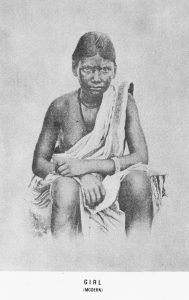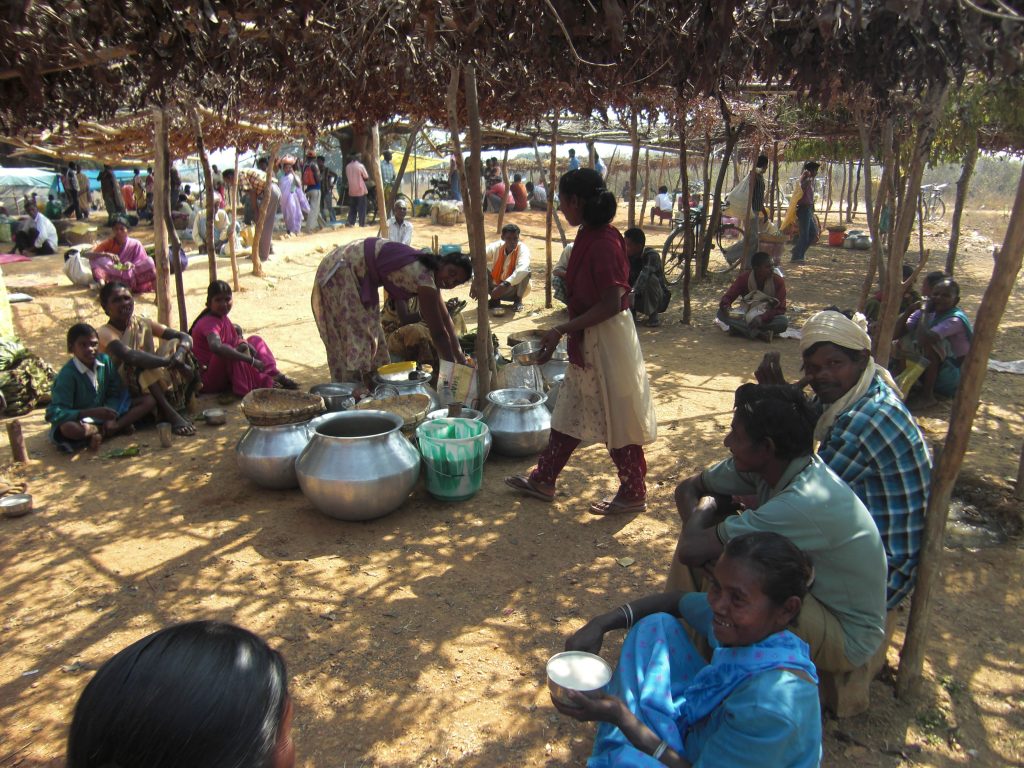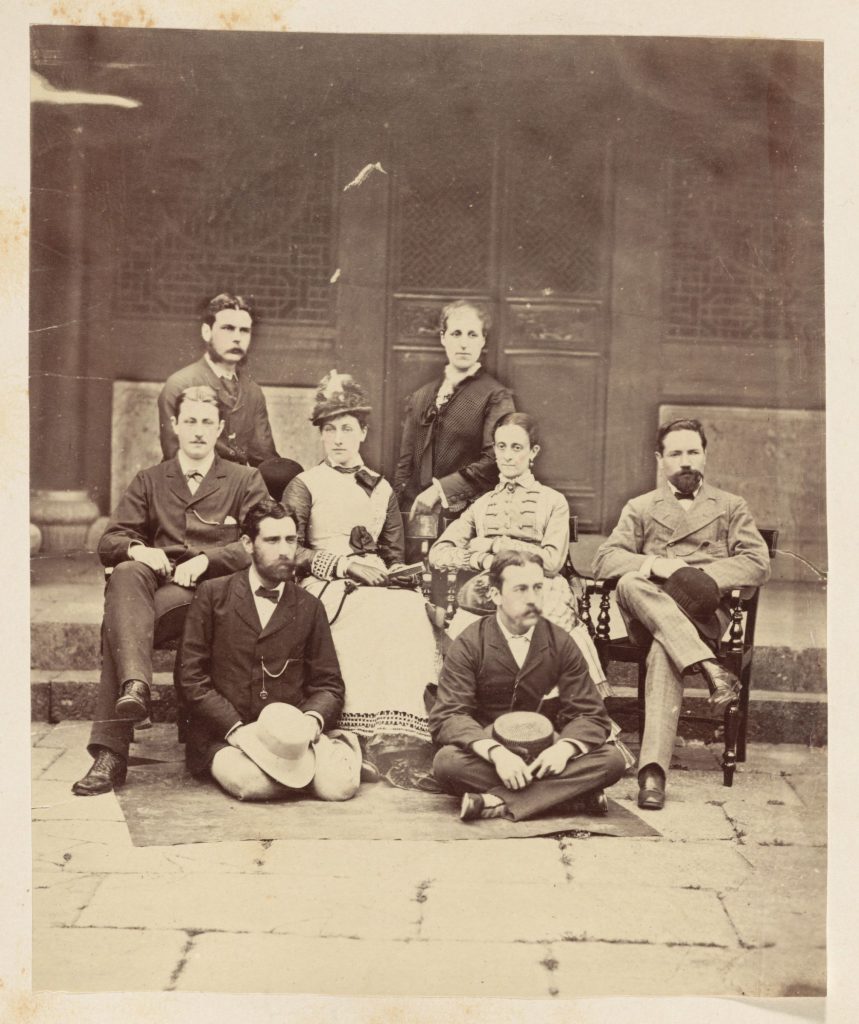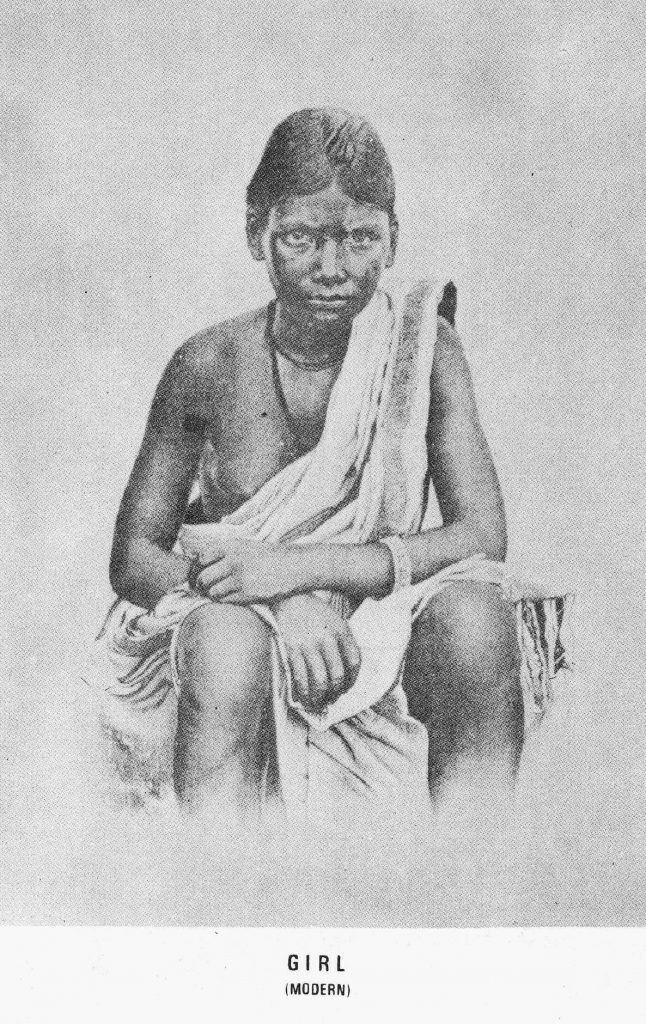THE GIRLS OF THE HO COUNTRY:
JAMA SUNDI AND THE NEW YEAR IN THE HODISUM OF THE NINETEENTH CENTURY
Strictly history, of course

I was chatting with Subuddhi HO about Tickell and we concluded that he knew the Ho language so well, because he had a crush on a HO girl. Well, he might not have been the only one. After Tickell, Dalton, too, liked the girls of the HO country.
Then I remembered that when I wrote about the pretty girls serving drinks in the pubs of Hodisum, I got a message from a professor in the south: ‘I feel uncomfortable when you talk about pretty Ho girls.’ I wrote back: ‘So don’t look’. And I thought ‘Let me have my diang in peace.’ You know what I mean.

So what follows is for people who can stand it. It is about the better half of the HO tribe. The people that visitors do not see as important, but do gaze at all the time. The women of the HOS.
D.N. Majumdar, ethnographer, wrote in 1937, ‘most of the writers of the last [nineteenth] century have … commended the beauty and attractiveness of HO girls.’ So let’s stick to the nineteenth century. Strictly history, of course.
In 1820-21, Edward Roughsedge, the army officer who invaded the HO country, and who suffered of fever, did not pay attention to HO women. Only said that the HOS ‘don’t marry until both sexes attain the age of puberty, and (returning to the men) restrict themselves to one wife’. Well, rumour has it that Roughsedge was elsewhere engaged. His love interest would be Mohan Kumari, the rani of Sambalpur. These are the rumours spread by Purushottam Kumar in 1994. He loved to repeat it, but gave no evidence. Still, Roughsedge’s lack of interest in HO women is striking.
What a difference with Samuel Richard Tickell in his ‘Memoir of Hodésum’ of 1840. He was the first assistant to be stationed in the recently subdued Kolhan Government Estate. His task was to tax the HOS, but to leave them also in (most of) their own habits. Above all, he had to be approachable by the common HO.
And he picked up HO. Some of the language he got in Court. But mostly he was talking – and taking numerous notes – in the villages, sitting in the courtyard of the houses of the HO mankis and mundas. Strictly ‘on business’, of course.
In his evenings, he would sit outside on the flat stones of the burial ground, and watch the Ho village life.
‘On calm summer evenings [the HOS] are fond of assembling at their doors to listen to the flute, the girls sing in concert, the younger ones go through the quiet, demure dance of the country, and papa and mama sit aloof looking approvingly on, and solacing themselves with a little ‘Eely’ [rice beer]; while twilight lingers their happy laughing voices, or the wild humming melody of their songs is heard . . . . The language of their songs is poetical and pleasing . . . . The men and musicians are generally in the centre of a large circle composed of women locked with their arms around each other . . . . All step with the greatest exactness in the tune, and the effect is most singular and pleasing.’ He was smitten. ‘I have seldom seen anything prettier.’
But Samuel Richard Tickell was smitten by a particular girl. He was careful to hide it in a general statement: ‘[Y]oung women and girls of the better class . . . . are well, and at times handsomely, dressed with a tasteful proportion of ornaments.’ He did not stop there. They are ‘becoming and decorous in their manners, most pleasing I their looks, and doubly engaging from the frank and confiding simplicity.’ Confiding. So Tickell was having private conversations. ‘Their open countenances, snowy white teeth and robust, up right figures, remind one of Swiss peasant girls’. At the time Switzerland was the country of romantic villages. Nobody less than Lord Byron had made it famous as such. But Tickell was writing these lines with one person in mind. He never named her.
Tickell learned his HO fast, and in less than two years, in 1840, he could publish his “Vocabulary of the Ho language’. It contains gems of conversations in both HO and English. At the same time, and more scientifically, he wrote his ‘Grammatical Construction of the Ho Language’, probably the first ever of an Indian tribal language. It became standard reading of linguists of India. Importantly, later, these articles were used to established the relation of the HO language with the Mon-Khmer languages of South East Asia. Rather distant, but still the closest, relatives of the Munda languages are in South East Asia.
Tickell was smitten, but he and his sweetheart got quarrels. He had to put up with massive tax evasion. The HOS, moreover, did not care to learn English or Hindi. And Tickell was not sure about the affair. The HOS could go without washing. He occasionally had trouble with their food – never with their drinks, I must say.
Most importantly, he could not joke with them. He came from a background of rough practical jokes. The HOS would have none of it. Especially boys and girls were sensitive. Up to the point of committing suicide. Tickell remained an outsider of HO life.
He went on, married an English lady from Bengal. There is some evidence that the marriage turned sour. It reflected in his children. We have a picture of one of his daughters, desperately unhappy in China. In his last years, his mainstay was his youngest daughter, about 20 years old when Tickell died in 1875.

But we got away from the HO girls.
They haunted the next ethnographer of the HOS, Edward Tuite Dalton. He was Commissioner of Chotanagpur from 1857 to 1875. Out of station he was a sociable man, happy to have a drink, listen to songs, and watch the dances. He visited Chaibasa in the years 1868 to 1872 and these experiences and the HOS found a central place in his monumental ‘Descriptive Ethnology of Bengal’ of 1872. He was smitten even worse than Tickell.
He stated plainly, ‘in no country of the world are wives better treated.’ Husbands ‘consulted [them] on all occasions, and I know one or two husbands whom I am almost inclined to regard as henpecked’. On the Annual fair in Chaibasa, around New Year, however, he spoke with a girl from just outside the town. In Dalton’s generalized description, she had a ‘finely chiselled and straight, high nose in an oval face [with] delicate and regular features’, and a ‘perfectly formed’ mouth and chin. Dalton gave her a compliment. He thought her ‘nice looking’. But the answer was not cheerful. “Oh yes! I am, but what is the use of it, the young men of my acquaintance don’t see it.”
The Ho men did not know their luck. Rather, they had trouble to reach it. These exchanges gave impetus to Dalton’s efforts to lower the bride price among the Hos. The mankis and mundas agreed in words, but nothing changed at the time. If a HO man had no means, he would have to simply run off with his love. He would settle the affair with her family afterwards. In HO fashion, with long talks first, ending in a conciliatory drink and then some more, ending in general dancing and enjoyment.
I should end here. But I can’t yet. We have a portrait of the girl Dalton spoke with. He commissioned it for his book. In 1871, when his book was nearly finished, he secured a special grant from the government and send one Mr Tosco Peppé to the Kolhan. He ordered him to get the picture. Not a simple thing, as at that time photographs were made with glass plate negatives.

She was 16 years old, 1.47 high. She had the modern dress of the time, ‘a thick long cotton cloth with a deep red border’. Her name was Jama Sundi of Narsanda, the first ever Ho woman to be photographed.
That is the story of the HO women of the nineteenth century. Some things never change. I hope to see you all in April 2017 when I come to the Hodisum.
Tonight, don’t let outsiders spoil your party with their uneasiness about pretty Ho women and girls. Raise your bowl or leave cup of diang and dance into the New Year. I wish you all a Happy New Year 2017.
Published on Facebook, 31 December 2016.
